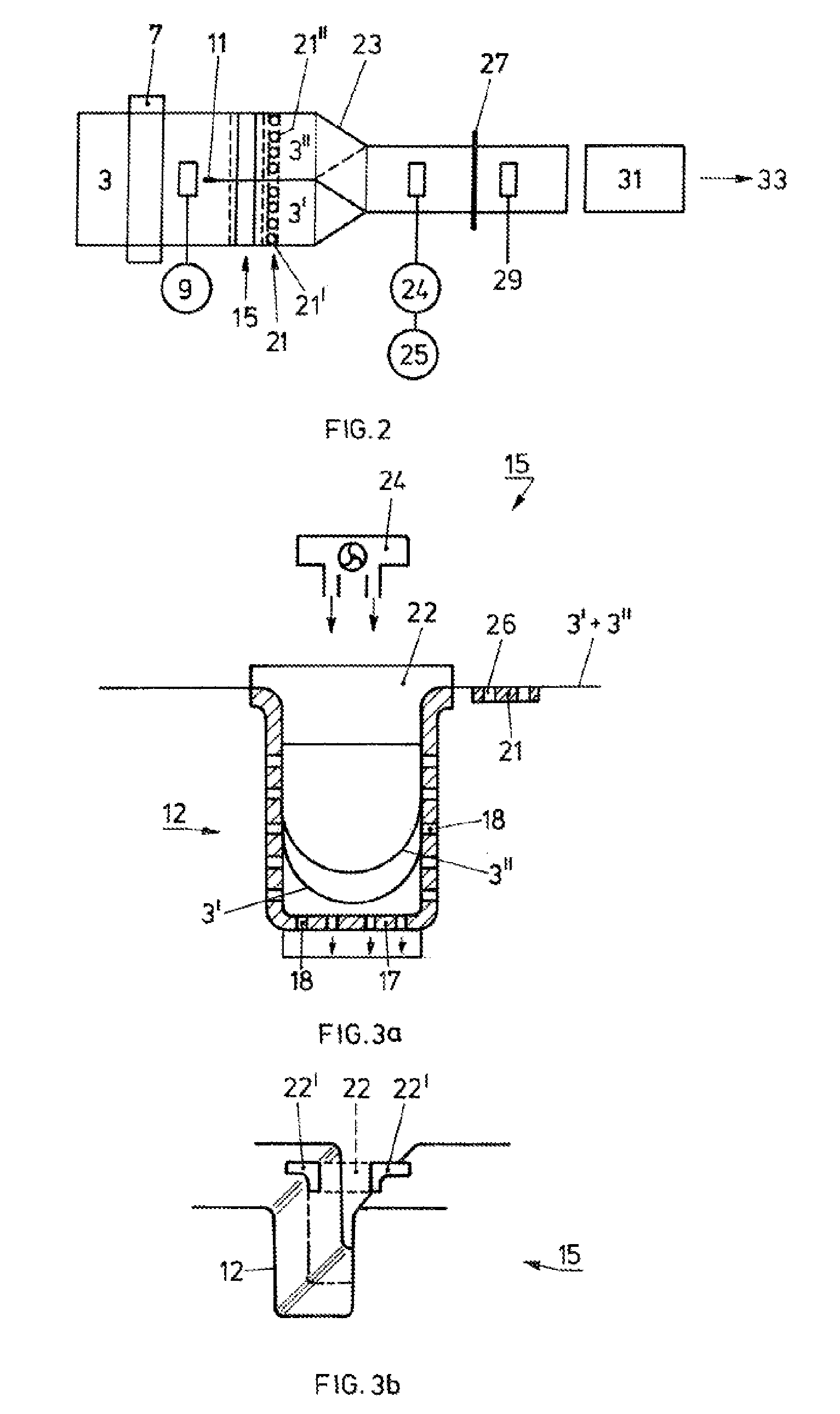Device for cutting paper webs
a technology of paper webs and cutting devices, applied in the field of cutting paper webs, can solve the problems of uncontrolled paper supply, jamming and crumpling, paper webs, etc., and achieve the effects of preventing uncontrolled paper movement, low web loading, and little for
- Summary
- Abstract
- Description
- Claims
- Application Information
AI Technical Summary
Benefits of technology
Problems solved by technology
Method used
Image
Examples
Embodiment Construction
[0032]FIG. 1 schematically shows, in longitudinal section, a system for cutting paper webs both in the longitudinal direction and in the transverse direction. The paper web 3 is drawn in the form of one or two webs into the cutting system 1 at approximately continuous speed from a stack or from a roller. The infeed point may be equipped with a manual transverse cutting blade in order to facilitate the drawing-in process.
[0033]The reading zone 7 is arranged directly downstream of. the infeed point and is, in short, designed for reading preferably from above and below over the full width of the form. In a few rare exceptional cases, however, it is necessary to provide a facility for start / stop operation in the case of reduced performance capability in the reading zone.
[0034]The paper web is pulled through the infeed point and the reading zone by means of the central drive 9 which follows the reading zone 7. The drive is regulated so as to attain the most uniform web running possible a...
PUM
| Property | Measurement | Unit |
|---|---|---|
| pressure | aaaaa | aaaaa |
| adhesion | aaaaa | aaaaa |
| resistance | aaaaa | aaaaa |
Abstract
Description
Claims
Application Information
 Login to View More
Login to View More - R&D
- Intellectual Property
- Life Sciences
- Materials
- Tech Scout
- Unparalleled Data Quality
- Higher Quality Content
- 60% Fewer Hallucinations
Browse by: Latest US Patents, China's latest patents, Technical Efficacy Thesaurus, Application Domain, Technology Topic, Popular Technical Reports.
© 2025 PatSnap. All rights reserved.Legal|Privacy policy|Modern Slavery Act Transparency Statement|Sitemap|About US| Contact US: help@patsnap.com



